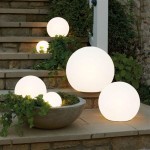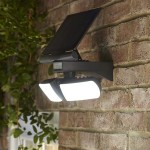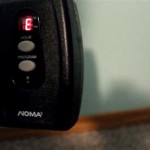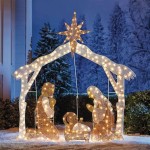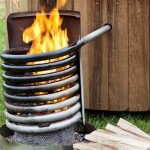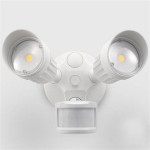Waterproof Outdoor Light Timers: A Comprehensive Guide
Outdoor lighting enhances the aesthetic appeal of properties, ensures safety by illuminating pathways, and deters criminal activity. Managing these lights effectively, however, necessitates automation. Waterproof outdoor light timers offer a practical solution, automating the operation of outdoor lights while withstanding various weather conditions. These timers ensure lights turn on and off at predetermined times, eliminating the need for manual intervention and contributing to energy conservation. This article will comprehensively discuss waterproof outdoor light timers, focusing on their types, features to consider, installation, and maintenance.
Types of Waterproof Outdoor Light Timers
Waterproof outdoor light timers are categorized based on their technology and functionality. The primary types include mechanical timers, digital timers, and smart timers, each offering distinct advantages and disadvantages.
Mechanical Timers: These timers are the simplest and most affordable option. They operate using a clockwork mechanism. A dial with pins is set to correspond to the desired on and off times. When the dial rotates, the pins trigger the switch, turning the lights on or off. Mechanical timers are relatively easy to install and operate, requiring minimal technical knowledge. Their robustness makes them suitable for basic outdoor lighting applications. However, they offer limited precision, typically in increments of 15 to 30 minutes, and their programming flexibility is constrained. Power outages can reset the timer, requiring manual readjustment.
Digital Timers: Digital timers utilize electronic circuits and a digital display to control the operation of outdoor lights. These timers offer greater precision and flexibility compared to mechanical timers. They allow users to program multiple on and off times throughout the day or week. Digital timers often include features such as dusk-to-dawn operation and daylight saving time adjustments. These timers are generally more energy-efficient than mechanical timers due to the absence of constant mechanical movement. However, they are more complex to program and typically require a backup battery to retain settings during power outages. The initial cost of digital timers is also higher than that of mechanical timers.
Smart Timers: Smart timers represent the most advanced type of outdoor light timer. They connect to a home Wi-Fi network, allowing users to control their outdoor lights remotely via a smartphone or tablet. Smart timers offer advanced features such as geofencing, which automatically turns lights on or off based on the user's location. They may also integrate with other smart home devices, such as voice assistants, allowing for voice control. Smart timers provide detailed energy usage reports, enabling users to optimize their lighting schedules for maximum energy savings. The setup of smart timers can be more complex than other timer types, requiring a stable Wi-Fi connection and familiarity with smartphone applications. Smart timers commonly have a higher initial cost and they also raise concerns about cybersecurity.
Key Features to Consider When Selecting a Waterproof Outdoor Light Timer
Choosing the right waterproof outdoor light timer involves considering several factors, including the timer's waterproof rating, load capacity, ease of programming, and additional features.
Waterproof Rating (IP Rating): The Ingress Protection (IP) rating indicates the level of protection a timer offers against water and dust. For outdoor use, a timer with an IP rating of IP44 or higher is recommended. IP44 indicates protection against splashing water from any direction. Higher ratings, such as IP65 or IP67, provide even greater protection against water and dust, making them suitable for more exposed locations. Selecting a timer with an appropriate IP rating is crucial for ensuring its longevity and reliable operation in outdoor environments.
Load Capacity: The load capacity of a timer refers to the maximum amount of electrical power it can handle. Exceeding the load capacity can damage the timer and potentially cause a fire hazard. It is essential to calculate the total wattage of all the lights that will be connected to the timer and select a timer with a load capacity that exceeds this value. Consider accounting for the inrush current when using LED lights since the starting wattage can be higher. The load capacity is usually specified in watts or amperes and can be found on the timer's packaging or in the product specifications.
Ease of Programming: The ease of programming is a critical factor, especially for users who are not technologically inclined. Mechanical timers are generally the easiest to program, while smart timers can be more complex. Digital timers offer a balance between simplicity and functionality. Look for timers with intuitive interfaces and clear instructions. Consider whether a timer's programming is difficult due to small buttons or complex menu navigation. For smart timers, evaluate the user-friendliness of the accompanying smartphone application. Some timers may also offer a backup battery to retain settings during power outages, simplifying reprogramming.
Additional Features: Various additional features can enhance the functionality and convenience of outdoor light timers. Dusk-to-dawn operation automatically turns lights on at dusk and off at dawn, adjusting to changing seasonal daylight hours. Daylight saving time adjustment automatically adjusts the timer settings to account for daylight saving time transitions. Random on/off settings can simulate occupancy, deterring potential intruders. Remote control capabilities, offered by smart timers, allow users to control their lights from anywhere with an internet connection. Energy monitoring features provide insights into energy consumption, enabling users to optimize their lighting schedules for energy savings.
Installation and Maintenance of Waterproof Outdoor Light Timers
Proper installation and maintenance are crucial for ensuring the safe and reliable operation of waterproof outdoor light timers. Installation typically involves connecting the timer to the power source and the lights, while maintenance includes regular inspections and cleaning.
Installation Procedures: Before starting the installation process, disconnect the power supply to prevent electrical shock. Follow the manufacturer's instructions carefully when connecting the timer to the power source and the lights. Ensure that all wiring connections are secure and properly insulated. Use waterproof connectors and conduit to protect the wiring from moisture and weather elements. If you are not comfortable working with electrical wiring, consult a qualified electrician. Mounting the timer in a protected location can further enhance its longevity and prevent damage from severe weather conditions. Some timers are designed for direct burial, while others require a surface-mounted enclosure.
Safety Precautions: When installing or maintaining outdoor light timers, adhere to all relevant safety precautions. Wear appropriate personal protective equipment (PPE), such as gloves and safety glasses. Ensure that the work area is dry and well-lit. Never work with electrical wiring in wet conditions. If you are unsure about any aspect of the installation or maintenance process, consult a qualified electrician. Regularly inspect the wiring and connections for signs of damage or corrosion. Replace any damaged components promptly.
Maintenance Tips: Regular maintenance can extend the lifespan of outdoor light timers. Clean the timer's housing regularly with a damp cloth to remove dirt and debris. Check the wiring and connections for signs of corrosion or damage. Replace any worn or damaged components promptly. For digital and smart timers, replace the backup battery periodically to ensure that settings are retained during power outages. If the timer is exposed to harsh weather conditions, consider applying a waterproof sealant to further protect it from moisture. During periods of prolonged inactivity, such as winter, consider disconnecting the timer and storing it in a dry, protected location.
Waterproof outdoor light timers are essential tools for automating the operation of outdoor lighting systems. By considering the different types of timers, key features, and installation and maintenance procedures, users can select the right timer for their needs and ensure its safe and reliable operation. The advancements in smart timer technology further provide advanced convenience and energy-saving potential.
Bn Link 24 Hour Mechanical Outdoor Light Timer With Silicone And Protective Covers Waterproof Dustproof Plug 3 Prong 6 Inch Flexible Cord Heavy Duty Com

Bn Link Outdoor Light Timer Waterproof 15a 24 Hour Plug In Sensor Countdown 2 4 6 Or 8 Hours Mode 100ft Range Remote Control With Grounded S For Home And Garden

Outdoor Battery Lights With Timer Direct

24 Hour Mechanical Waterproof Outdoor Timer With 2 Grounded Hbn Bn Link

Waterproof Battery Operated Lights With 6 Hour Timer Sparkling

Bn Link 24 Hour Mechanical Outdoor Light Timer With Silicone And Protective Covers Waterproof Dustproof Plug 3 Prong 6 Inch Flexible Cord Heavy Duty Com

Black Decker Outdoor 2 Grounded S Timer With Waterproof For Lights Pack Bdxpa0030 The Home Depot

Outdoor Photocell Light Timer Waterproof Dusk To Dawn Sensor 1 O Bn Link

Outdoor Light Timer Waterproof Remote Control Plug In

Tm01 Plug In Timer Outdoor Ip65 Waterproof Mechanical Clock For Garden Kings Lighting
